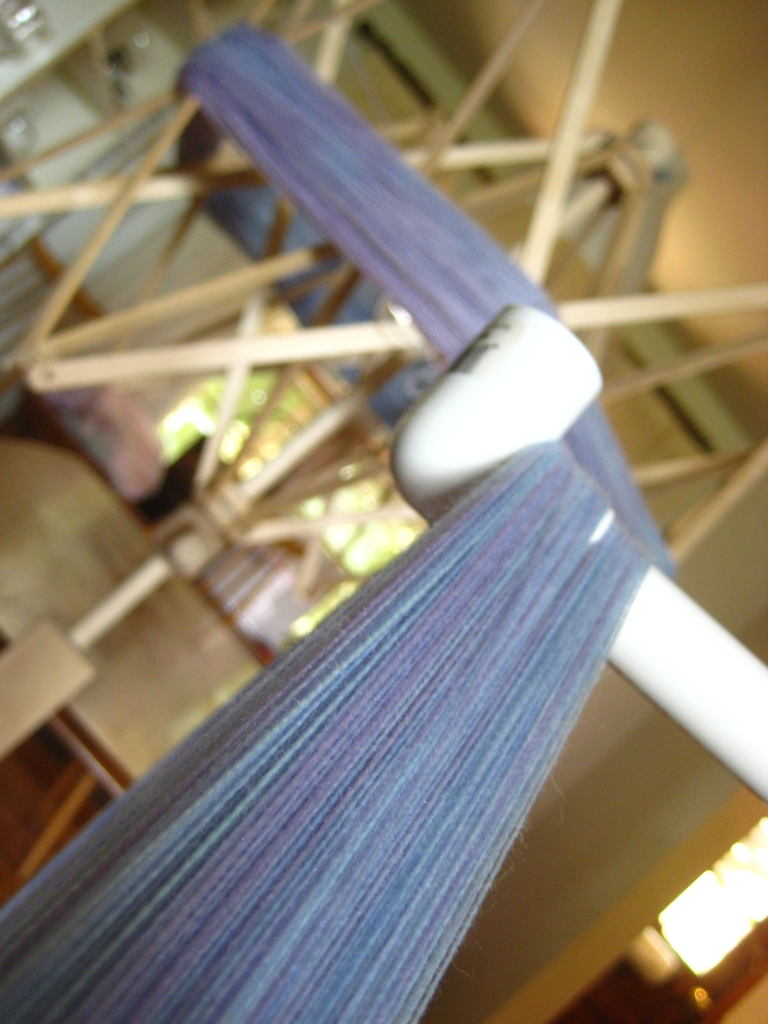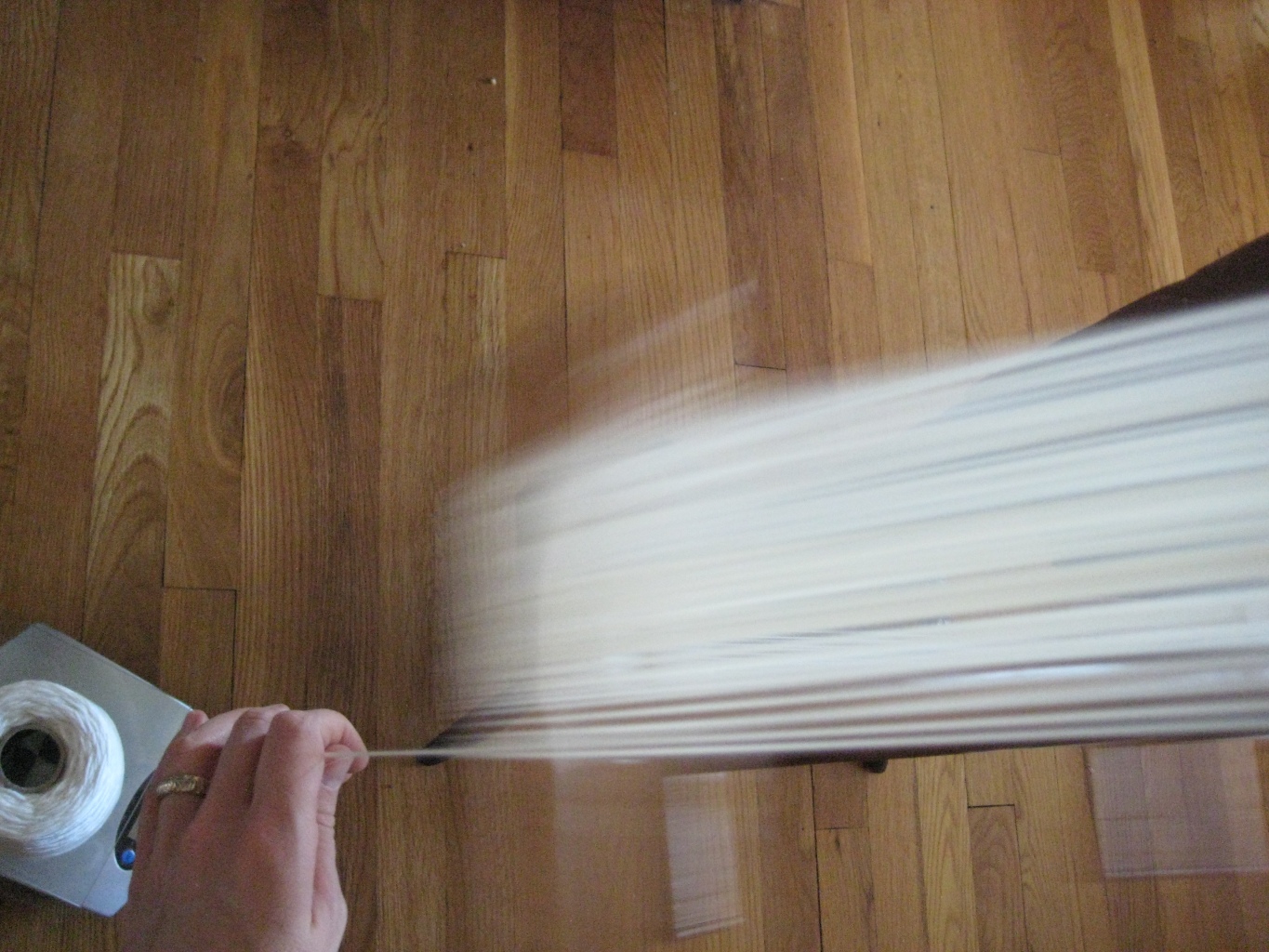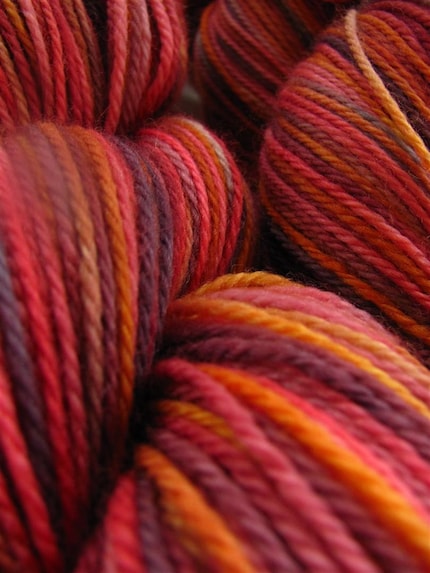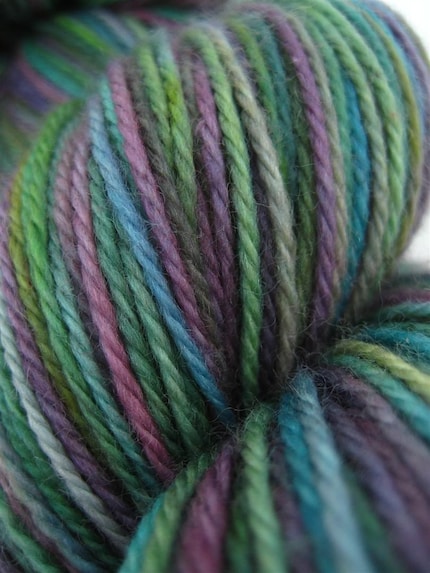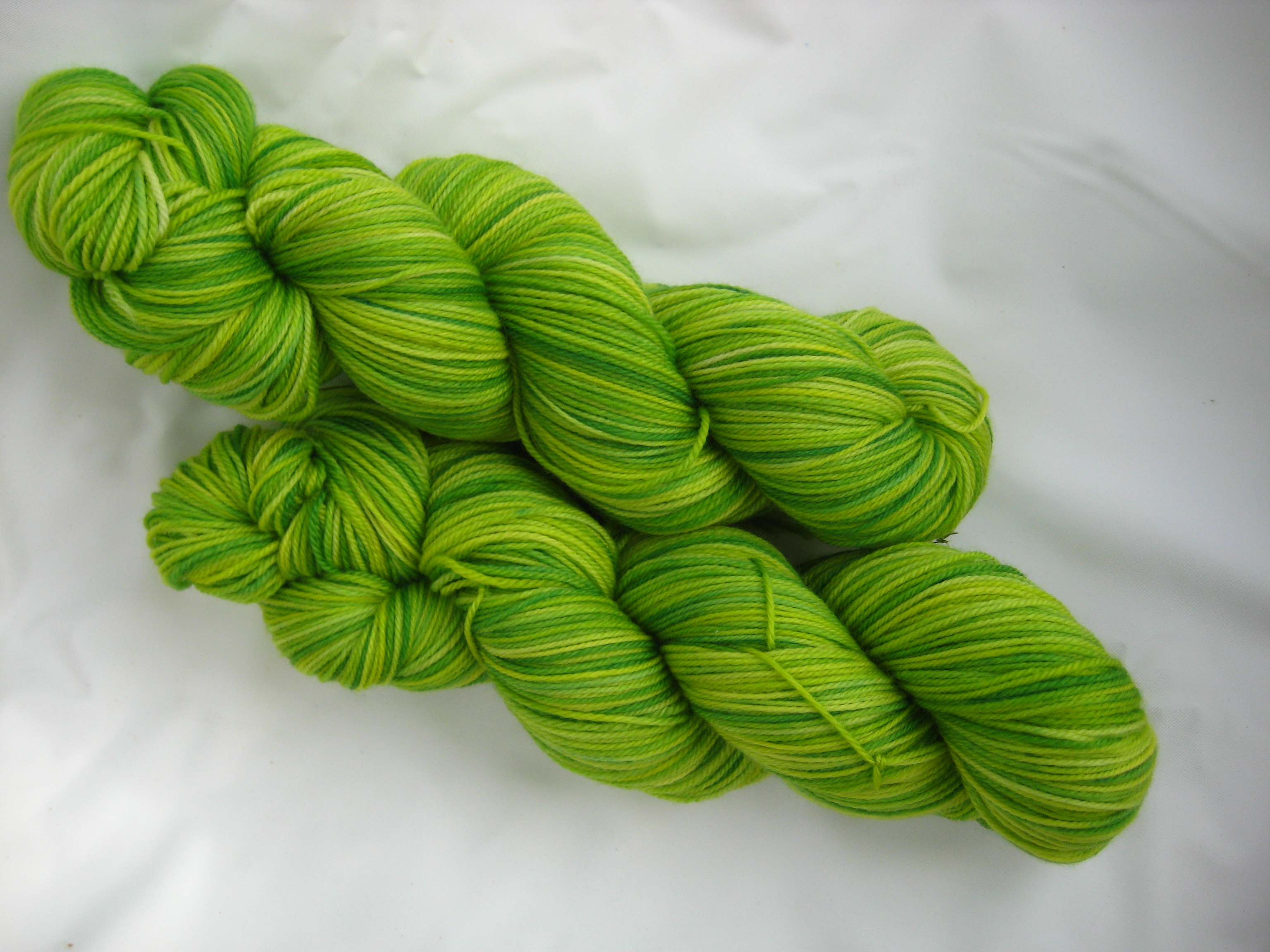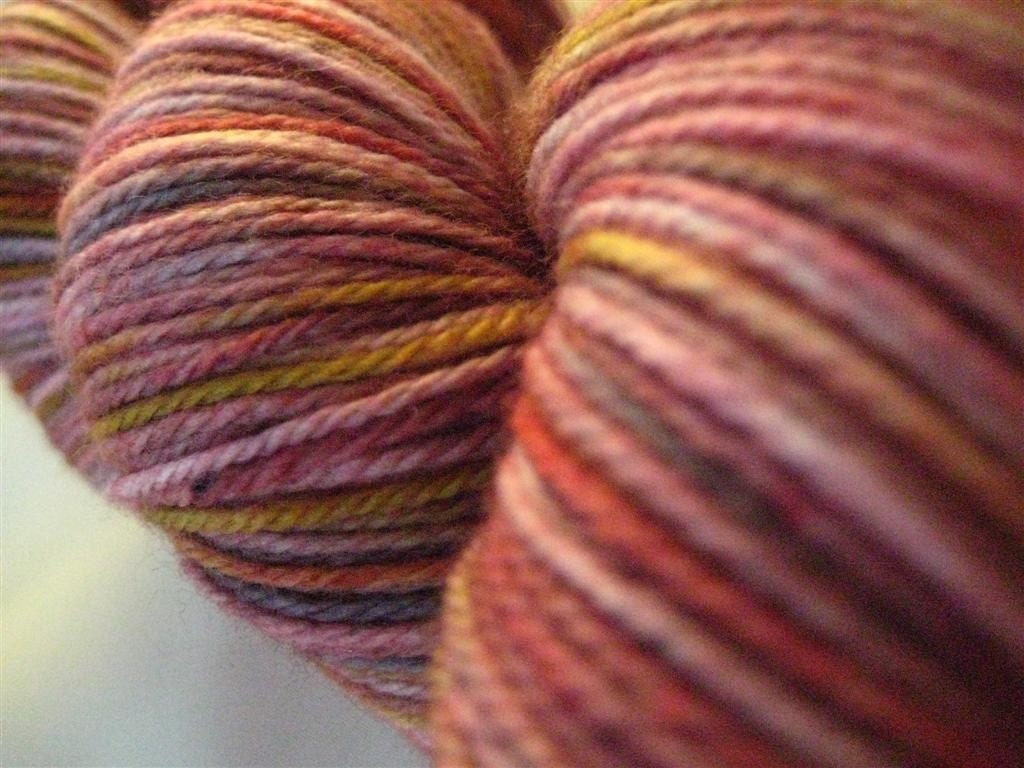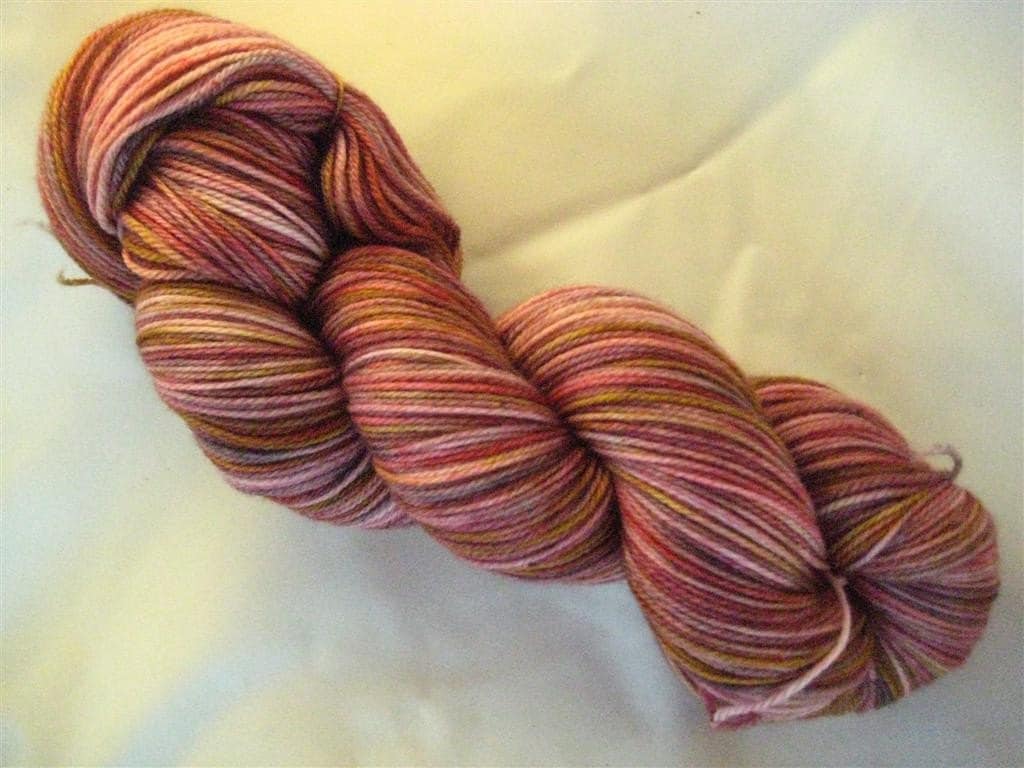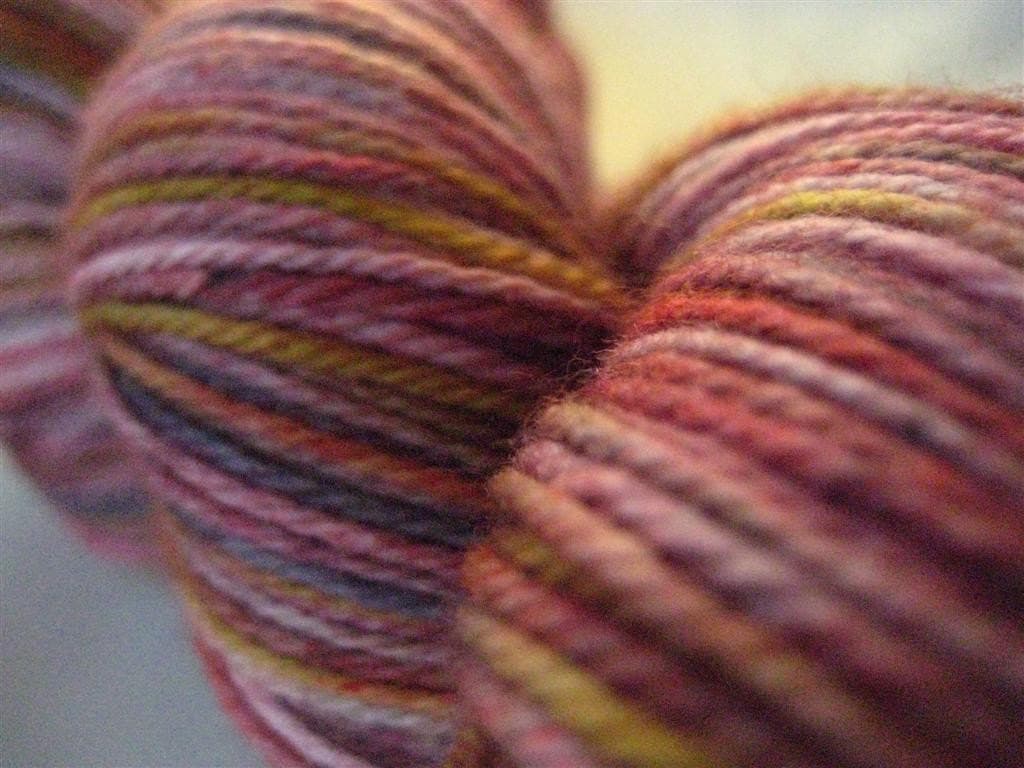So, let’s say I was holding out a skein of yarn to you — beautiful, light, airy yarn, with a slight halo that made the softness just call out to you. And let’s say that, as I held it out to you, I said, almost in a whisper, “It’s laceweight, a two-ply of silk and merino…” As you reached out to touch it, what would be the first thoughts that came into your mind? Would you be thinking strength? Would you be thinking red-hot? How about razor sharp? No? Those words wouldn’t be what popped into your mind? Huh. Me neither.
I’ve been dyeing the new laceweight yarn that will be going in the shop this week. It’s called Luna and it’s everything that laceweight ought to be: delicate, soft, luxurious, stunningly beautiful. With 20% silk blended into 80% superfine merino, it feels divine against the skin — the kind of yarn you just can’t stop touching. Oh, and it takes colour like a dream.
So far, so good.
It was when I was reskeining the dyed yarn that everything changed. I was turning the skein winder with my right hand and gently guiding the yarn with my left… I had the skein winder going at a good clip because, at 1300 yards per skein, it makes for very tired arms if it goes too slowly. So, we’re going along at a good pace, this yarn and me, when I realised my left hand is starting to hurt… The space between my thumb and my index finger is really starting to burn. So I moved my hand and rolled the yarn up my finger a bit and… moments later, that spot is red-hot too. This yarn is just so thin and going at such a pace that it was actually cutting into my skin!
So I looked about for something to hold it with — an oven glove would be ideal — and spotted a plastic coat hanger which will do the trick nicely. Arranging the yarn so it was running through the hook, I could guide it onto the skein winder by moving the coat hanger back and forth. And it worked perfectly …for a time.
After a little while, I realised that there wass a little ball of fluff forming on the hook of the coat hanger. Thinking that there might be a rough spot taking some of the halo off the yarn, I stopped the skein winder and took a closer look. And that’s when I discovered this…
That’s right. You are seeing what you think you are seeing. In a matter of minutes, my lovely, light, airy, and stunningly beautiful laceweight yarn was actually slicing through a coat hanger. You could have knocked me over with a feather!
And I’m so pleased I’d not carried on guiding it with my bare hand…
So, there you have it. SpaceCadet Creations’s new Luna Laceweight yarn: delicate, soft, luxurious and saturated with colour. Just as you’d expect.
…And also, apparently, red-hot and razor sharp. Not as you’d expect at all.



